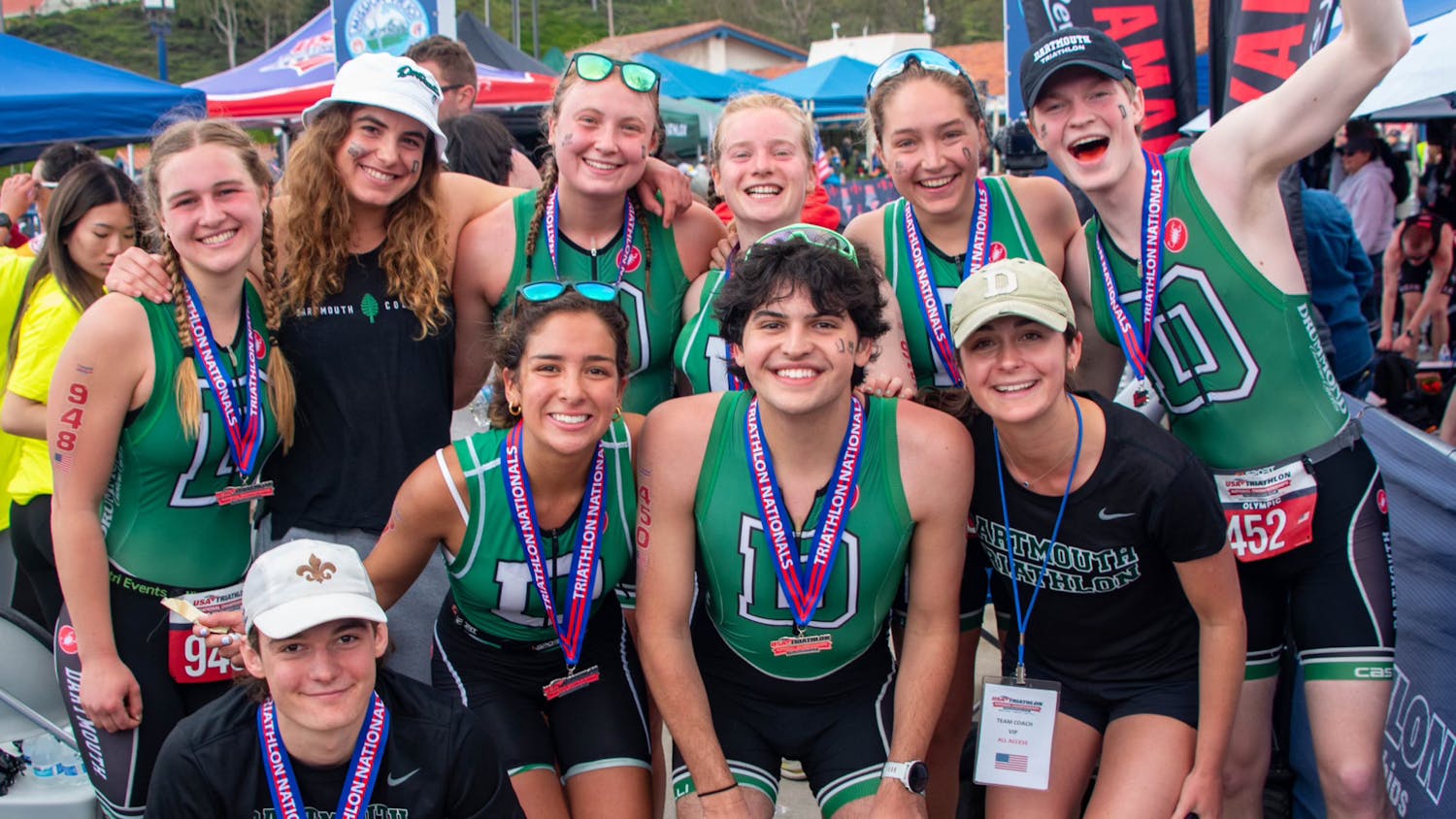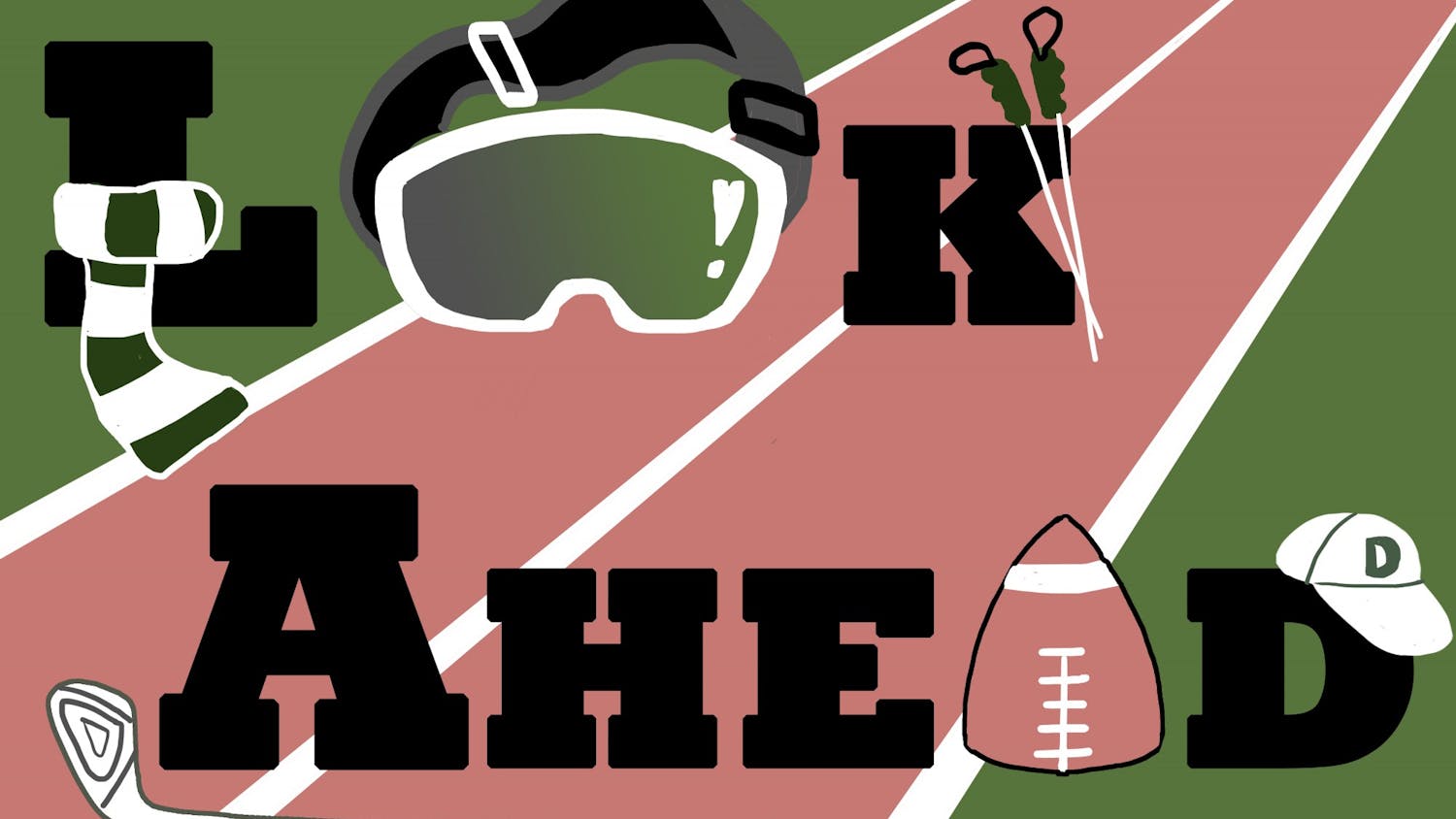Dartmouth Nutritionist: Shira Evans
At the Division I level, it’s easy to get exhausted with such a demanding athletic and academic schedule. This is precisely why Dartmouth places such a huge emphasis on nutrition, enabling its athletes to recharge and remain energized throughout their busy days.
Dartmouth has invested significantly in nutrition counseling and resources to help its hardworking student-athletes. The college’s Dartmouth Dining website has a detailed guide with important nutritional information for students and athletes alike. The website provides detailed information about the four food groups and general information about what and when to eat.
On top of this summary on the website, Shira Evans, the coordinator of nutrition programs at Dartmouth Health Services and Dartmouth peak performance sports nutritionist, is a great resource for student-athletes. Evans is in her third year at Dartmouth and has worked with many athletes to help them prepare for competition.
“I meet with students individually for whatever goals they have, whether they want a body composition analysis, weight gain or whatever is specific for their sport,” Evans said.
Evans’ primary goal is to inform students about how they can best handle their bodies. To help with this, she created a fueling station at the Berry Sports Arena.
“A lot of times athletes may be on the go, and over time if they’re missing out on eating opportunities, that can compromise their training or they may not perform athletically,” Evans said.
The station is open four hours a day Monday through Friday, two hours in the morning and two hours in the afternoon, and it provides a variety of snacks for different types of athletes.
“We’ve streamlined a menu for athletes, so athletes with a variety of needs could get a pre-practice snack or something for recovery,” Evans said.
Additionally, she uses the fueling station as an opportunity to educate student-athletes.
“We give out [Peak Performance] tips and have a weekly [trivia] question on our white board to give students more knowledge around sports nutrition and health,” Evans said.
An Athlete’s Perspective
The lightweight crew team is one of Dartmouth’s 35 varsity athletic teams competing — and eating — for the Big Green. Andre Quintilliani ’22, a rower from West Chester, Pennsylvania, reflected on his nutrition as a competitive varsity athlete.
“I would say my nutrition has changed after working with the team nutritionist,” Quintilliani said. “I was able to get some great tips on how to break down a normal day in terms of calories, so that ultimately I wouldn’t go to bed feeling hungry or too full.”
Quintilliani notes that the attention to nutrition came well before Dartmouth, attributing much of that to his mom stocking the kitchen with good wholesome ingredients. However, as a rower at the collegiate level, Quintilliani finds that nutrition is even more important.
“As a rower, I’m able to see how my body reacts to nutritious food and food with not a lot of nutrients, and it just shows how important it is to fuel your body the right way,” he said.
In order to compete, the average weight of rowers in a lightweight boat cannot be above 155 pounds and no rower alone can weigh over 160 pounds. As a result, leading up to a race Quintilliani gives extra attention to reducing his water weight.
“I will probably cut back on foods that retain water and foods that have a lot of water in them to ensure that I’m not adding any water weight before a weigh in,” Quintilliani said. “Changing up my nutrition could make me weaker, which would most likely affect performance. The more work we do, the more calories we burn, so it is important to know that eating the right calories will ultimately lead to a healthier season even with cutting weight.”
’53 Commons for Student-Athletes
The Class of 1953 Commons is a nutritional staple for the Big Green, as student-athletes frequently eat there for the unlimited food, large group tables and healthy every day options. Elizabeth Rosenberger, registered dietitian for nutritional issues, discussed ’53 Commons’ nutritious offerings and credited Shira Evans for how she has encouraged healthy choices for athletic teams.
“Honestly, we keep healthy options and make sure there is enough of a variety of healthy proteins, a lot of different grains and all the vegetables,” Rosenberger said. “We know they are always looking for sweet potatoes. Evans has done phenomenal things for the DP2 program, teaching them what they should eat and giving them things to look for at the dining hall.”
Coaches can make specific requests when the team eats at ’53 Commons. Grilled chicken, pasta and broccoli are the foods that coaches most commonly request according to ’53 Commons general manager Brandon Crosby. Teams typically eat out of the regular buffet, but occasionally ask for options that the dining hall does not usually offer.
“There’s so many [football players] I think it’s a good idea to give them their own buffet off our regular items, so that there’s not an extra 150 people clogging up the dining kitchen,” Crosby said. “If all of a sudden they wanted prime rib for a celebratory meal, absolutely we can do that, here’s the price. If they wanted something above and beyond, I would charge the team for that, or the coach would pay for that.”
’53 Commons is often a pre-game destination for athletic teams where the staff is able to accommodate large reservations. Crosby and Rosenberger said they would open up for a team outside of normal hours, though this rarely occurs.
“It starts the same way for every student here at Dartmouth; any group, club or organization can reserve space here,” Crosby said. “They do that with our [catering and support services surpervisor], Kristen Post. They contact her and let her know how many people, what area they want to reserve and we reserve it for them.”
Outside of reserved meals, teams love packing in to ’53 Commons, where they can sit at long tables with the full team. The dining hall staff made changes this year to add more circular tables and break up some of the long tables. The changes were partially based on a Thayer School of Engineering project that found that large tables were “intimidating” for many students. Nonetheless, athletes consistently sit down at longer tables or push smaller tables together to form adequate seating for everyone.
“The North Side [known by students as Dark Side] is the side that I think typically a lot of sports teams like to sit at because they do have the big long tables there,” Crosby said. “People obviously like the long tables because when [we] move them, they put them back.”
Overall, ’53 Commons tries to provide the best possible experience for student-athletes in terms of healthy options, reserved dining hall sections and proper seating choices.
“We want to be a good partner for athletics,” Crosby said. “We want everyone to feel welcome here, but athletics is an important part of Dartmouth, and we want to do what we can to make them happy — the athletic teams, the organizations and the coaches.”



